| Date | Text | |
|---|---|---|
03 Jul 1767

Pitcairn Island |
Pitcairn Island (exploration) Pitcairn Island in the Pacific Ocean is sighted from HMS Swallow (1766) by 15-year-old Midshipman Robert Pitcairn on a British Royal Navy expeditionary voyage commanded by Philip Carteret, the first definite European sighting. |
|
03 Jul 1767

Norway's |
Norway's (technology) First edition of Adresseavisen, Norway's oldest newspaper remaining in print, is published. |
|
03 Jul 1769
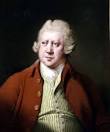
Richard Arkwright |
Richard Arkwright (technology) Richard Arkwright is granted a British patent for a water-powered spinning frame able to spin thread mechanically. |
|
03 Jul 1780

André Parmentier |
birth André Parmentier Born 3 Jul 1780; died 26 Nov 1830 at age 50. (Anglicized name: Andrew Parmentier) Belgian-American, André Joseph Ghislain Parmentier, born in Enghien, Belgium, was a horticulturist, responsible for exhibiting many plant species in America. He was the second of four sons of a linen merchant. Little is known about his early life. In 1824 Parmentier emigrated to America where he lived for only six years until his untimely death in 1830. Soon after arriving he established a nursery in Brooklyn from which he supplied seeds and root stock he had imported or propagated himself. In 1825, he established the first botanic garden in Brooklyn, at Atlantic and Carleton Avenues. His work is also preserved at the Vanderbilt Mansion, Hyde Park, NY, the most impressive of the four known Parmentier designs. |
|
03 Jul 1782

Pierre Berthier |
birth Pierre Berthier Born 3 Jul 1782; died 24 Aug 1861 at age 79. French mineralogist and mining engineer who discovered bauxite (aluminium ore) on 23 Mar 1821 near the village Les Baux de Provence in southern France. On 24 May 1806, he joined the central laboratory at the Board of Mines. From 1816, he was chief of the laboratory at the École des Mines, and professor of assaying. Berthier analyzed kaolin along with dozens of other minerals and ores. He sought out phosphate deposits valuable for agriculture. He published a treatise (1943) of practical analytical procedures that were widely used by other mineralogists. In another field, Berthier noticed - before Mitscherlich - that isomorphism occurred whereby chemically different substances can have the same crystalline form and even co-crystallise. more |
|
03 Jul 1787

John Wilkinson |
John Wilkinson (technology) John Wilkinson launches an iron barge in the English Midlands. |
|
03 Jul 1790

Jean-Baptiste Louis Romé de l’lsle |
death Jean-Baptiste Louis Romé de l’lsle Died 3 Jul 1790 at age 53 (born 26 Aug 1736). quotes French crystallographer who, with his Essai de Cristallographie (1772), confirmed Nicolas Steno’s observation that the angles between corresponding faces of quartz crystals are always the same, although various samples of quartz crystals may differ in appearance. Further, Romé showed that different crystal substances have their own characteristic angles. For example diamond crystals appear with an octahedral form, whereas pyrite crystals are based on the cube. In his first book, he had 100+ descriptions of crystal forms, which he expanded to 450 by 1784. Romé thus formulated the Law of Constancy of Interfacial Angles suggested by Steno in 1669; used it to identify different minerals; and firmly established modern crystallography. |
|
03 Jul 1795
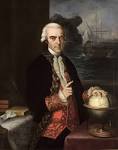
Antonio de Ulloa |
death Antonio de Ulloa Antonio de Ulloa, Spanish explorer (born 1716) |
|
03 Jul 1806

Strawberry |
Strawberry In 1806, Michael Keens, a market gardener of Isleworth near London, exhibited the first cultivated strawberry that combined size, flavor, and color at the Royal Horticultural Society. The 600 strawberry varieties found today stem from five or six original wild species, and are a member of the rose family. The wild, small, fragrant forest strawberry of Europe was available to the Romans in the Middle Ages. Europeans discovered wild strawberries in Virginia when their ships landed there in 1588, grown by local American Indians who had cultivated strawberries as early as 1643. When Virginia sent a better flavored, strawberry to England in 1642, and a large white strawberry from Chile was introduced in 1806, the big fruit we know today, emerged. Strawberries are unique, because they are the only fruit with seeds on the outside. |
|
03 Jul 1822
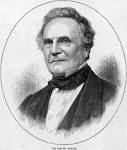
Charles Babbage |
Charles Babbage (mathematics) Charles Babbage publishes a proposal for a "difference engine", a mechanical forerunner of the modern computer for calculating logarithms and trigonometric functions. Construction of an operational version will proceed under British Government sponsorship 1823–32 but it will never be completed. |
|
03 Jul 1841

Pluto |
Pluto In 1841, John Couch Adams decided to determine the position of an unknown planet by the irregularities it causes in the motion of Uranus. He entered in his journal; "Formed a design in the beginning of this week in investigating, as soon as possible after taking my degree, the irregularities in the motion of Uranus... in orderto find out whether they may be attributed to the action of an undiscovered planet beyond it..." In Sep 1845 he gave James Challis, director of the Cambridge Observatory, accurate information on where the new planet, as yet unobserved, could be found; but unfortunately the planet was not recognized at Cambridge until much later, after its discovery at the Berlin Observatory on 23 Sep 1846. |
|
03 Jul 1844

great auks |
great auks (biology) The last definitely recorded pair of great auks (Pinguinus impennis) are killed on the Icelandic island of Eldey. |
|
03 Jul 1858

Charles Schuchert |
birth Charles Schuchert Born 3 Jul 1858; died 20 Nov 1942 at age 84. American invertebrate paleontologist who was a leader in the development of paleogeography, the study of the distribution of lands and seas in the geological past. During the 1880s he made a living drawing fossil illustrations for state geological surveys, while continuing to search for specimens for his own growing collection. After serving as curator of the U.S. National Museum (1894-1904) Charles Schuchert joined the Yale University faculty following their first invertebrate paleontologist, Charles E. Beecher. |
|
03 Jul 1871
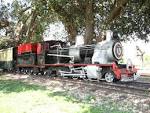
Narrow-gauge locomotive |
Narrow-gauge locomotive In 1871, the first U.S.-made, narrow-gauge locomotive - for mountain use - was built by the Baldwin Locomotive Works in Philadephia, Pa. On this day, it was first used by the Denver and Rio Grande Western Railway Company. Called the Montezuma, from a location it served, it had a 3-foot guage, a length of 30-ft, and a total weight of 25,000-lb. It had 9-in cylinders with a 16-in stroke. Narrow gauge was more adaptable to rough terrain, required less earthworks, permitted steeper gradients and sharper curves - as well as costing less to build than standard gauge lines. Narrow-gauge railroad could be used hauling passengers or freight. Logging, mining and industries and factories also operated narrow gauge lines. |
|
03 Jul 1874

Johan Gunnar Andersson |
birth Johan Gunnar Andersson Born 3 Jul 1874; died 29 Oct 1960 at age 86. Swedish geologist and archaeologist whose work laid the foundation for the study of prehistoric China. In 1914, he accepted the offer to become adviser to the Geological survey of China, where he stayed until 1924 and became deeply involved in the excavations at Chou-k'ou-tien outside Peking. In 1921, at a cave near there, on the basis of bits of quartz that he found in a limestone region, he predicted that a fossil man would be discovered. Six years later, the first evidence of the fossil hominid Sinanthropu (Peking man) was found there. In 1923-24, he organized an expedition to Gansu province in Western china where he localised and examined some 50 sites of prehistoric China. |
|
03 Jul 1879

Alfred Korzybski |
birth Alfred Korzybski Born 3 Jul 1879; died 1 Mar 1950 at age 70. quotes Polish-born American scientist and philosopher. Korzybski was the originator of general semantics, a system of linguistic philosophy that attempts to increase humanity's capacity to transmit ideas from generation to generation (what Korzybski called man's "time-binding capacity") through the study and refinement of ways of using and reacting to language. |
|
03 Jul 1886

Linotype newspaper |
Linotype newspaper In 1886, the first U.S. newspaper page set by Linotype was the New York Daily Tribune for this day's editorial page. Ottmar Mergenthaler (born in Württemberg, Germany on 11 May 1854) had produced the world's first linecasting machine; the time-consuming process of setting type by hand was eliminated. The machine was originally called "Blower" and later renamed "Linotype" (short for "Line of type"). Within six years of this day's demonstration, 1,000 Linotype machines had been made. By 1904, worldwide there were 10,000 Linotype casting machines in service. |
|
03 Jul 1886

Ottmar Mergenthaler |
Ottmar Mergenthaler (technology) Ottmar Mergenthaler's Linotype machine is introduced at the New-York Tribune. |
|
03 Jul 1897

Jesse Douglas |
birth Jesse Douglas Born 3 Jul 1897; died 7 Oct 1965 at age 68. American mathematician who was awarded one of the first two Fields Medals in 1936 for solving the Plateau problem. which had first been posed by the Italian-French mathematician Joseph-Louis Lagrange in 1760. The Plateau problem is one of finding the surface with minimal area determined by a fixed boundary. Experiments (1849) by the Belgian physicist Joseph Plateau demonstrated that the minimal surface can be obtained by immersing a wire frame, representing the boundaries, into soapy water. Douglas developed what is now called the Douglas functional, so that by minimizing this functional he could prove the existence of the solution to the Plateau problem. Douglas later developed an interest in group theory. |
|
03 Jul 1903

Transpacific cable |
Transpacific cable In 1903, the first cable across the Pacific Ocean between Hawaii, Midway, Guam and Manila was completed and spliced at Manila, Philippine Islands. After testing, the first official message was sent the next day. The first section of the cable across the Pacific Ocean between San Francisco and Hawaii had already been established at the beginning of the same year, with its first official message sent on 1 Jan 1903. That technological event ended Hawaii's isolation by connecting it to the mainland U.S. and the rest of the world. The cable was a mainstay of communications into the early 1950s when newer technology rendered it obsolete. (The 1902 all-British telegraph line from Canada to Australia and New Zealand was the first line to cross the Pacific Ocean.) |
|
03 Jul 1920

William Crawford Gorgas |
death William Crawford Gorgas Died 3 Jul 1920 at age 65 (born 3 Oct 1854). Major William Crawford Gorgas was a U.S. Army surgeon who contributed greatly to the building of the Panama Canal by introducing mosquito control to prevent yellow fever and malaria. Originally, Gorgas doubted the conclusion of Walter Reed's Yellow Fever Commission in Cuba (1900) that the mosquito was the only means by which the disease spread. Nevertheless, Gorgas supported the new policy and eventually became the most active proponent of the mosquito theory in the United States. In Cuba, he assisted in eliminating mosquito breeding grounds. In 1904, Gorgas led the ten-year anti-mosquito campaign to wipe out yellow fever in Panama. |
|
03 Jul 1929
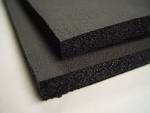
Foam rubber |
Foam rubber In 1929, foam rubber was developed at the Dunlop Latex Development Laboratories in Birmingham. British scientist E.A. Murphy whipped up the first batch in 1929, using an ordinary kitchen mixer to froth natural latex rubber. His colleagues were unimpressed - until they sat on it. Within five years it was everywhere, on motorcycle seats, on London bus seats, Shakespeare Memorial Theatre seats, and eventually in mattresses. |
|
03 Jul 1935

André-Gustave Citroën |
death André-Gustave Citroën Died 3 Jul 1935 at age 57 (born 5 Feb 1878). French engineer and industrialist who introduced Henry Ford's methods of mass production to the European automobile industry. In 1908 he helped the Mors automobile firm increase its production from 125 cars to 1,200 cars per year. At the outbreak of World War I Citroën persuaded the French army of the need to mass-produce munitions. In 1915 he built a munitions plant whose production of shells reached 55,000 per day. Upon this success he was given the responsibility of organizing the supplying of all French munitions plants with certain vital raw materials. After the war Citroën converted his original arms factory into a plant to mass-produce a small, inexpensive automobile; the first Citroën car came off the assembly line in 1919. |
|
03 Jul 1935

André Citroën |
death André Citroën André Citroën (born 1878), automobile manufacturer. |
|
03 Jul 1937

Jacob Schick |
death Jacob Schick Died 3 Jul 1937 at age 59 (born 16 Sep 1877). American inventor and manufacturer of the first successful electric dry razor. He started in the razor business in 1925 to design and manufacture his invention of the Magazine Repeating Razor. By 1926, he was selling clips of blades that could be loaded into a safety razor without touching the blade to avoid cuts during handling. While this product was successful, he turned his attention to developing a dry razor. By 1927 he had designed a dry razor with a reciprocating head powered by a flexible drive shaft to an external motor. Although he marketed this model from 1929, it was not until 1931 that he had improved the idea as a new one-handed electric shaver with self-contained motor that sales took off. He lived only six year after that.. |
|
03 Jul 1938

Fastest steam locomotive |
Fastest steam locomotive In 1938, the Mallard was documented as the world's fastest steam locomotive travelling at 126 mph (202-km/h) at milepost 90¼, on straight, slightly downhill tracks, between Little Bytham and Essendine, on the East Coast Main line of the London and North Eastern Railway, in England. It was hauling six coaches and a dynamometer car recording the speed, with a total tare of 240 tons. The Mallard was designed as a streamlined express locomotive with an aerodynamic body, 70-ft long, weighing 165 tons with tender. Its build date was 3 Mar 1938, and it was used in service until it was retired 1963. After restoration in the 1980's it made a few special runs, and is now in the National Railway Museum, York. |
|
03 Jul 1952

Heart surgery |
Heart surgery In 1952, the first surgical operation in the U.S. to expose the heart's mitral valve for a prolonged time was undertaken by Dr Forest Dewey Dodrill at the Harper Hospital, Detroit, Mich. The patient, a 41-year-old man, was provided with The Michigan Heart as a substitute for the lower left ventricle. |
|
03 Jul 1957

Frederick Lindemann, 1st Viscount Cherwell |
death Frederick Lindemann, 1st Viscount Cherwell Frederick Lindemann, 1st Viscount Cherwell (born 1886), physicist. |
|
03 Jul 1961

First fatal nuclear accident in the U.S. |
First fatal nuclear accident in the U.S. In 1961, three men were killed in the first fatal nuclear accident in the U.S. when an experimental reactor exploded. The Stationary Low-Power Plant No.1 (SL-1), was part of the National Reactor Testing Station (NRTS), near Idaho Falls, Idaho. An 80-lb control rod was lifted by hand beyond its safe position, causing a core meltdown and explosion of the reactor. Four days were spent to devise a safe method to recover one of the corpses. All three bodies were extremely radioactivity, causing problems for their burial. Clean-up took 18 months. Investigators were never able to determine why this “abnormal act” occurred. Two decades later, a documentary speculated one of the men had marital problems and sabotaged the reactor. |
|
03 Jul 1973
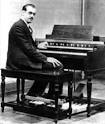
Laurens Hammond |
death Laurens Hammond Laurens Hammond (b. 1895), American inventor |
|
03 Jul 1977

Raymond Damadian |
Raymond Damadian (medicine) Dr Raymond Damadian with Larry Minkoff and Michael Goldsmith perform the first magnetic resonance imaging body scan of a human. |
|
03 Jul 1987

Transatlantic hot-air balloon crossing |
Transatlantic hot-air balloon crossing In 1987, British millionaire Richard Branson and Per Lindstrand became the first to cross the Atlantic by hot-air balloon, named Virgin Atlantic Flyer. They jumped into the sea as their craft went down off the Scottish coast. They travelled a distance of 2,900 miles from from Sugarloaf Mountain, Maine, in 33 hours to set a new record for hot air ballooning. At the time, the balloon was the largest ever flown having 2.3 million cubic feet of capacity. Three years later, they crossed the Pacific in another balloon from Japan to Arctic Canada, a distance of 6,700 miles, breaking all existing records with speeds of up to 245 miles per hour. |
|
03 Jul 1998

Danielle Bunten Berry |
death Danielle Bunten Berry Danielle Bunten Berry (b. 1949), also known as Dan Bunten, software developer. |
|
03 Jul 2002
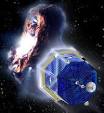
Comet Nucleus Tour |
Comet Nucleus Tour In 2002, NASA launched Contour (Comet Nucleus Tour), a U.S. unmanned satellite on a mission to get within 60 miles of a comet nucleus to study frozen samples of the solar system from its infancy. It was launched aboard a Boeing Delta 2 rocket from Cape Canaveral. After orbiting Earth until 15 Aug 2002, the satellite's onboard rockets sent it toward an encounter with Comet Enke in 2003, then Comet Schwassman- Wachman 3 in 2006. It is equipped with a special debris shield so it can navigate closer to the comets and survive bombardment from the minute particles of dust and frozen water that form a comet's most distinctive feature, the tail. The shield includes a layer of Kevlar, the material used in bullet-proof vests. |
|
03 Jul 2004
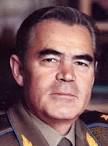
Andriyan Nikolayev |
death Andriyan Nikolayev Andriyan Nikolayev (b. 1929), cosmonaut. |